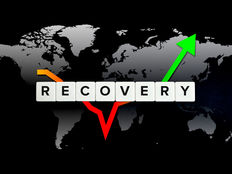
The U.S. local and state economies contribute over 10% to the national GDP, and their economic recovery will certainly determine the fiscal path of our national economy
In spite of an ongoing pandemic and economic halt, local and state governments are optimistic about an economic rebound in 2021. Primarily, this optimism can be attributed to widespread vaccination efforts and, more importantly, a political shift that has awarded all three branches of government to a single party, which may be seen as an avenue to get various economic legislations passed with ease to bring the economy back on track. Furthermore, the recent talks of the new administration about additional federal stimulus involved prioritizing the fiscal health of local economies, economic recovery, and preventing further job losses.
In this article, we will take a closer look at the upcoming initiatives of the federal government and how they will likely impact local and state economies.
Be sure to check out our Education section to learn more about municipal bonds.
Is Federal Cash Injection the Answer to Local Government Economic Recovery?
This will likely be the most important question of 2021: Will the federal government continue with its federal stimulus for local and state governments or focus more on other areas of the economy and fiscal policy to speed up the economic recovery?
The answer is likely to be both, as they both go hand in hand with crafting a national economic strategy. Under the previous administration, two federal stimulus bills provided one-time funding for many local governments and agencies to compensate for the portion of revenues lost due to COVID-19. Furthermore, the federal funds were a short-term fix, as expected, and many local and state economies continue to grapple with budgetary shortfalls, leading to layoffs and service cuts.
Although a permanent fix will be the resumption of dedicated revenue streams based on economic activities like consumer spending, the low interest rate environment will continue to help with the cost of capital for local economies to bridge the gap between revenues and expenditures for their annual budgets and provide some budgetary flexibility. Furthermore, with the Federal Reserve pledging to keep rates low for the foreseeable future, local governments will be able to take advantage of low borrowing costs for the near future. Since November 2020, the new administration had also hinted at a national infrastructure package that would create jobs and rebuild assets.
It is also important to note that local governments with set-aside reserves, solidly diversified revenue streams, and expenditure flexibility will be in much better shape than economies based on volatile revenues like tourism or limited sources of revenues.
Click here to see a recap of how muni bonds fared in 2020.
Healthcare Policy and Infrastructure Push
These two areas can significantly impact local and state economies. In the recent assessment of federal spending on healthcare, S&P Ratings reported that Medicaid was the most significant single program area of federal grants to states. The estimated total of federal outlays to states was $458 billion in fiscal 2020, up from $370 billion in fiscal 2016, an increase of 24%.
The federal budget deficit is estimated to be $3.1 trillion in fiscal 2020, up from $585 billion in fiscal 2016. Entitlement programs, including Medicaid, are major drivers of long-term fiscal deficits at the federal level. That being said, the new administration will likely push ACA (Affordable Care Act) to expand health insurance coverage and provide additional protections. This will provide additional support for citizens to buy low cost insurance that can help with the national COVID-19 strategy, and add a net incremental benefit.
In terms of a national infrastructure policy, a cohesive federal infrastructure program could help avoid another decade of underinvestment in the nation’s infrastructure and concurrently act as an economic stimulus. This is essential for the economic recovery of local and state governments. A collaborative federal and state push to spend on large-scale infrastructure projects is a win-win proposition for both job creation and much needed infrastructure improvements.
The Bottom Line
Despite the grim statistics around COVID-19, the U.S. is likely to turn the corner on the pandemic in the upcoming months, which will be the foundation for rebuilding the economy at all levels of government.
Although many local and state governments are facing serious credit pressures due to their revenue and expenditure imbalances, the future looks optimistic. Furthermore, the new federal government has hinted at making the following key items their priority in the first couple of years: federal stimulus, pandemic strategy, economic initiatives, healthcare, infrastructure and education. These initiatives will require a strategic partnership between federal, local, and state governments and substantially benefit their fiscal health.
Sign up for our free newsletter to get the latest news on municipal bonds delivered to your inbox.
Disclaimer: The opinions and statements expressed in this article are for informational purposes only and are not intended to provide investment advice or guidance in any way and do not represent a solicitation to buy, sell or hold any of the securities mentioned. Opinions and statements expressed reflect only the view or judgement of the author(s) at the time of publication and are subject to change without notice. Information has been derived from sources deemed to be reliable, the reliability of which is not guaranteed. Readers are encouraged to obtain official statements and other disclosure documents on their own and/or to consult with their own investment professionals and advisers prior to making any investment decisions.






